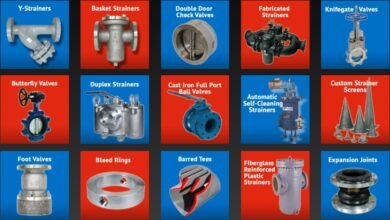Process and Advantages of Gravity Die Casting

Producing casting components from non-ferrous materials like aluminum or low-temperature alloys requires gravity die casting. This technique makes complex parts for the aerospace, automotive, medical, and energy industries. The die is made by pouring molten metal into a cast iron block that has been properly machined.
The processes of gravity die casting
Steel, which is strong and can handle high temperatures, is used to make the die, which is then used to cast the part from aluminum, zinc, or another alloy. There are three distinct phases to a gravity die-casting process:
- The mold is heated, and a spray agent that assists in the release is applied. In addition to facilitating the release of the alloy component, this release agent also aids in cooling the top of the die. In this manner, it prepares the die for the next component to be put into it.
- After the coating is placed, the molten alloy is poured into the mold. The metal is poured into runners, transporting the liquid to the various sections. A special runner directs the liquid to fill the chamber from the bottom up, sealing any holes or turbulence in the solidified portion.
- Because the die acts as a heat sink and because a releasing agent is sprayed over the component, it will cool quickly. After the component has cooled, either a human or automated system will open the die and remove it. When the casting has hardened, it is used to eliminate the gates and runners that let the molten metal enter the die.
Benefits of using Gravity die casting
The strength and other mechanical qualities of castings made with the gravity die casting technique is maintained despite the castings’ complicated geometries, making this method appealing. Therefore, it is well suited for producing aluminum castings that do not conform to the specifications of the pressure die-casting method. Some of the benefits of using gravity die casting are:
- Acceptable for both low- and high-volume production of components.
- Mold costs less than the pressure die-casting method.
- A viable alternative to the pressure dies casting technique for producing bigger and thicker components.
- Generates parts with far finer finishes than are achievable by sand casting.
- There is a near-zero limit on the possible size and form complexity. Sand cores are inserted into the mold to create hollow sections in the final product.
- Creates components with high-quality mechanical qualities; further improvement is possible by T6 heat treatment.
Die casting is often regarded as one of the most advantageous production processes available all over the globe. This is easy to understand, given the many positive aspects associated with this form of production and the reasons why more and more corporations like aluminium casting companies in India are adopting this strategy.
Relation between Automobile Manufacturing and Gravity die casting
Most factories or aluminium casting companies in India are likely to spend money on elaborately designed and heavily tooled permanent molds to produce consistent goods. Reusable molds made from long-lasting materials like grey cast iron or stainless steel provide accurate reproduction of surface details time after time. Gravity casting is most efficient when used with simple, one-piece molds, although it may also be used to make complicated castings.
The automobile industry heavily uses gravity casting, but it has applications in almost every other contemporary industry. Gravity die casting is used to make a wide variety of light-alloy vehicle parts, including cylinder heads and engine supports.
Conclusion
Moreover, with the advancement of technology, it is now feasible to cast complicated components using the gravity casting process. Several sectors use this method to produce a wide range of parts and appliances for usage in areas as diverse as the automotive sector, the production of kitchen appliances, the creation of lighting, etc.
Visit Fox Den Lane for more interesting blogs.




